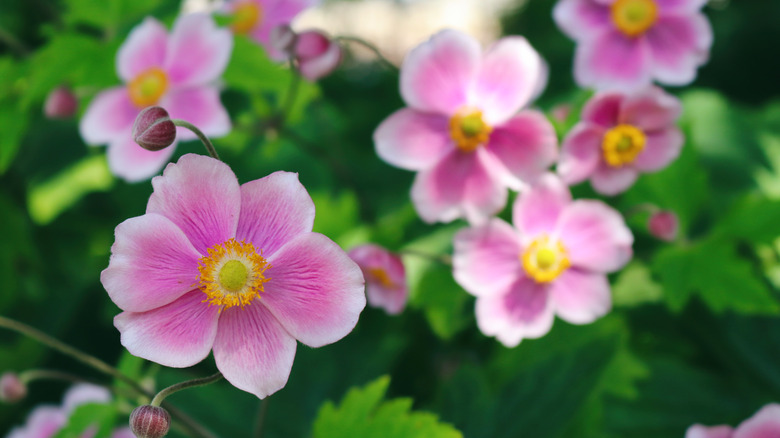The Late-Blooming Summer Flower You Still Have Time To Grow In Your Garden
If you are trying to figure out what to plant in fall, you might feel limited by the few options popular for late-season flowers. In addition to old favorites like mums and sunflowers, there are a few less-common options that you may not have considered, such as the Japanese anemone (Anemone hupehensis). This stunning flower typically features white or pink petals and yellow stamens that will bring life to your garden even as the weather cools down. Japanese anemones bloom from August to October, making them the perfect flower to plant during fall.
If you want to add these types of anemone flowers to your garden, you should know that they thrive in USDA Hardiness Zones 4 through 8. Gardeners who find these flowers to be a good fit for their region might want to consider adding them to a fall perennial border. This can help you get one step closer to maintaining color in your garden all year long. One of the main perks of these flowers is that they are relatively simple to plant and maintain, and will come back year after year. By following a few simple steps, even beginners can successfully grow healthy Japanese anemone flowers through fall.
Tips for growing fall-blooming Japanese anemone
Before moving forward with Japanese anemone, it is important to note that they typically become invasive when grown in loose soil. They can develop clumps that you would need to divide in the spring to keep under control. Although there are some invasive plants you should never grow, these flowers are an exception because they are not invasive in the Upper Midwest region, making them fine for gardeners located there. Now that you know where Japanese anemone can grow safely without potentially harming the environment, let's dive into some tips to help you plant successfully.
These flowers need to start out in pots before they can be transferred into ground soil. Fall-blooming Japanese anemone can be planted into the ground in early fall in enriched soil: You will need to place garden compost into the area where the flowers will be planted to ensure they are healthy. Remember to add mulch to the soil each spring afterward. As far as sunlight requirements, Japanese anemones need full sun to partial shade. Now, on to watering.
When these flowers are first starting out, they should be watered regularly. However, you only need to water them during dry spells after one summer of them being planted in your garden's border. The exception to this is if you choose to grow compact cultivars in containers. In this case, you will need to keep up with regular watering.

